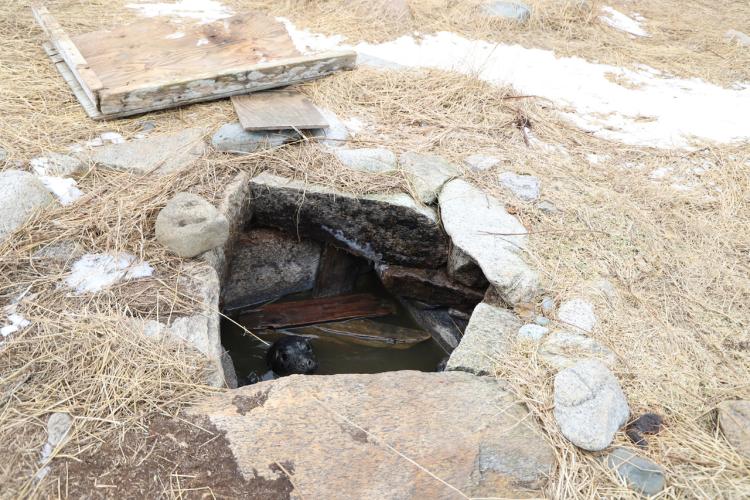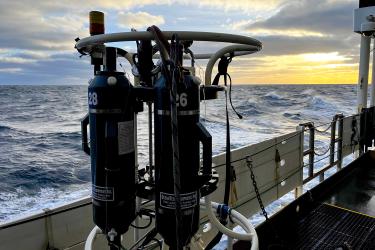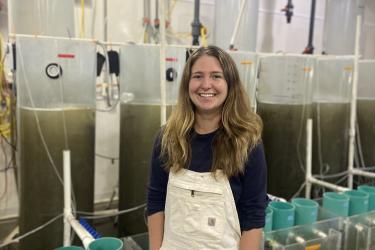Recently our seal capture operations moved 250 miles north from Cape Cod and the Islands to the Seal Island National Wildlife Refuge, a 65-acre island 22 miles offshore from Rockland, Maine. The island hosts the largest gray seal pupping colony in Maine and the third largest in the United States.
We wanted to know if the movement patterns and health conditions of gray seals in Maine differed from the seals we capture in Massachusetts. Data from satellite tags and biological samples provide information on their habitat use throughout the Gulf of Maine, as well as the prevalence of viruses. These important components help us understand an unusual mortality event that occurred in Maine, New Hampshire, and Massachusetts in 2018.
Home to Seals and Seabirds
On Google Earth, Seal Island looks like a giant rock shaped like an upside-down seahorse. In May we might have seen Atlantic puffins nesting on the rocky cliffs, but as we approached this day in January we could see only gray seals and bald eagles. Cory Roberts, Matt Wyman, and Nick Stillwell of Maine Marine Patrol escorted us safely onto this incredible island. Our team consisted of Lynda Doughty, Dominique Walk, Megan Ely and Katie Gilbert (all from Marine Mammals of Maine), Rob DiGiovanni (Atlantic Marine Conservation Society), Jon Runstadler (Tufts University), and myself (NOAA Fisheries Northeast Fisheries Science Center.)
The only sign of human habitation on the island was a small cabin and a deep freshwater well. Normally a well would not be worth mentioning, but the sounds coming from it were unusual. Peering down, we saw a young seal looking up at us. The boards covering the well had blown off and the seal had either fallen in or taken an unfortunate dive.
First Things First: A Rescue
One nice thing about collaborating with stranding network members is that they have the expertise and impulse to jump right into active response mode.
“Okay, folks, Bobby fell in the well and I think we ought to get him out before we start sampling other animals. You all okay with that?” Rob asked to the team.
I was thinking yes, but how can you rescue a frightened seal bobbing in fetid water three feet below the surface without being bitten?
Rob and Dominique laid on their stomachs and removed boards to free up space. After unsuccessfully trying to lower a bag into the hole with a rope tethered to the handles, Rob and Jon finally grabbed the seal’s hind flippers and hoisted it up out of the hole. The seal looked around, a little bewildered, then lay in the sun for the rest of the day.
A Successful Day's Work
Now it was time to do the work we came here for: capturing weaned pups. With the help of the Maine Marine Patrol staff, we sampled 14 pups, five of which had satellite tags. We weighed each animal, took body measurements, collected samples of blood, skin, fur, and whiskers, and applied flipper and satellite tags. Some samples were collected for partners collaborating on projects under our research permit. From capture to release, the whole process took about 10-15 minutes.
The pups will stay on the island for a few more weeks. Then the fun continues, as we see where they go once leaving the colony and get sample results back. Each sampled seal opens up new questions about animal behavior and the state of the environment, especially comparisons across different pupping colonies. Where will this adventure take us next?
Kimberly Murray
Seal Researcher, Northeast Fisheries Science Center
2020 Seal Team Lead
All photos were taken with a research permit.





